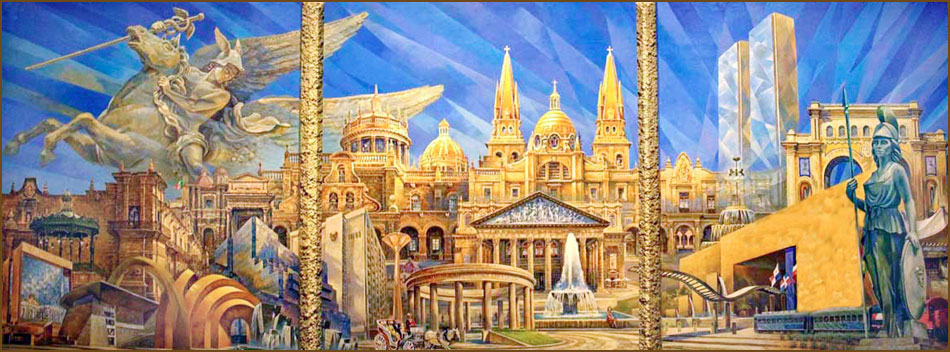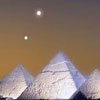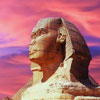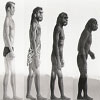We Are Not The First
 by Andrew Tomas
by Andrew Tomas
In this work, I attempt to show that there existed a much higher level of science and technology in antiquity and prehistory than is generally supposed.
Some of this knowledge is an enigma. For instance, how could the Mayas have devised a more precise calendar than we in this age of science? Why is the Khufu Pyramid still the biggest megalithic edifice in the world? What made the Babylonians invent electric batteries 4,000 years ago? Why did the ancient Greeks and Romans expect to find planets beyond Saturn?
The scientist does not have a ready explanation for riddles of this kind because he is overburdened with the practical problems on hand. Moreover, the average man of science functions in a narrow field, possessing an in-depth knowledge of his branch of science but comparatively little about other branches outside of it. The scientists themselves admit this limited specialization and jokingly call it ‘professional cretinism’. With the chain reaction in science and the overproduction of information, nothing can be done about this tendency for the moment. After all, the scientist is a man and not a computer.
The baffling aspects of the history of science are therefore left to theorists. However, true science is not merely the compiling of an immense catalog of facts but also the ability to evaluate them. In order to throw some light on these confounding profiles of antique science, it is essential to formulate the problems.
–Why did there exist a long tradition of a Golden Age instead of that of a savage past?
–Why did knowledge rise and fall?
–What was it that prompted ancient Greek philosophers and Brahmin priests to discuss the possibility of inhabited worlds in space?
–Did the ancients possess the secret of anti-gravitation if they could raise heavy stones and even themselves in the air?
–Did the sages of former epochs know of energies other than electric power if they could construct perpetual lamps that burned for hundreds of years?
–How could the people of ancient times have left detailed descriptions of flying machines if such things did not existed?
–Were the automations and robots recorded in mythology and history, memories of automation in a past technological era?
–If civilized man is a recent arrival, who carved the images of animals extinct for hundreds of thousands of years?
–Can socialism be really new if the Incas had a moneyless economy with no private ownership?
–How could the Vishnu Purana give the geographical contours of the Americas and the North Pole zone without having made a scientific survey?
One way of resolving these awkward questions could be to visualize an advanced technological civilization which must have perished in a devastating geological cataclysm thousands of years ago.
Professor Frederick Soddy, a pioneer of atomics, wrote in 1909: ‘The legend of the Fall of Man, possibly, may be all that has survived of such a time before, for some unknown reason, the whole world was plunged back again under the undisputed sway of nature to begin once more its upward toilsome journey through the ages.’
History, mythology and the sacred books of most races support Professor Soddy’s imaginative theory. Why did the legends of a deluge appear in sunny Egypt, Greece and Mesopotamia, mountainous Peru and Mexico, icy Greenland and the sandy Gobi?
The Cro-Magnon of 20,000 years ago was not physiologically any different from the average European. Had he been a survivor of another civilized epoch, we could then understand why he had the talent to produce works of art in his prehistoric museums of are, such as Altamira and Lascaux. In dynamic realism the masterpieces of this ‘caveman’ were superior to the succeeding paintings and sculptures of Egypt, Babylon or Crete.
In antiquity scholars believed in a lost legendary age. They were certain that empires had been destroyed by the wrath of the elements, and because of the planetary scope of this catastrophe, very little remained of their former grandeur except beautiful myths of a Golden Age.
For instance, Philo of Alexandria (20 B.C. – 54 A.D.) wrote: ‘By reason of the constant and repeated destruction by water and fire, the later generations did not receive from the former the memory of the order and sequence of events.’
In the Timaeus, Plato (427-347 B.C.) recorded the words of an Egyptian priest: ‘There have been, and there will be again many destructions of mankind.’ When civilization is destroyed by natural calamities then ‘you have to begin all over again as children,’ said the high priest of Egypt to Solon.
The Popul Vuh of Guatemala laid stress on the great scientific knowledge of the ‘first men’. ‘They were able to know all, and they examined the four corners, the four points of the arch of the sky and the round face of the earth.’ This primeval race could ‘see the large and the small in the sky and on earth,’ affirms the sacred book of the Mayas. But all their knowledge was lost when the gods asked – ‘must they also be gods?’ And so the ‘eyes of the first men were covered and they could see only what was close’. This is how ‘the wisdom and all knowledge’ of the first men were destroyed.
A myth is often history concealed. The story of the Popol Vuh of Guatemala may be true if a developed civilization had come to an end in a geological disaster, and the survivors had been left with only a verbal tradition of a past epoch of culture.
Historical events settle down in time like mud in a river and are gradually covered up by new incidents. If the past is not uncovered, studied and recorded, it will remain in oblivion. The amount of knowledge we possess about the past is only a small portion of the complete story of mankind.
There are riddles in the history of civilization which can be clarified if we take the legend of a sunken continent as a working hypothesis. In the last Ice Age, all of Canada, part of the United States, all of Belgium, Holland, Germany, Scandinavia and a portion of Eastern Europe, were under an arctic ice sheet. About twelve thousand years ago a sudden rise in temperature occurred, and the ice began to thaw. Sea levels rose 0.92 meters per century between 12,000 and 44,000 B.C. during this deglaciation. What was the cause of the end of the Ice Age?
If the reality of Atlantis and its sinking are accepted, this could easily be the explanation of how the warm Gulf Stream began to flow northwards when the barrier of the Atlantean continent was removed after its disappearance under water. In this manner, the stream became the ‘central heating’ of Europe and warmed the climate so much that within one hundred years giant masses of the European Ice Cap melted. If one were to put an island continent in the Atlantic to block the Gulf Stream, Europe as well as North America would again be transformed into an arctic zone tomorrow.
Global population figures between 6,000 B.C. and the beginning of our era are extremely significant. There were about 250 million people on earth 2,000 years ago. the population of the planet in 4,800 B.C. was 20 million. In the year 5,000 B.C. there were 10 million on all the continents. One thousand years earlier – in 6,000 B.C. only 5 million people inhabited the earth. On the basis of these figures, the population of the globe was well under 1 million about 10,000 B.C. – an astonishingly low figure. Why was man such a rare creature if he has had a continuous existence as a primate and then as a rational being, for at least two million years? Was man with his works destroyed by the fury of the elements?
Now where should we turn to find the traces of antediluvian man? Egypt seems to be the first logical place to make a search for his records. ‘The Egyptians pride themselves on being the most ancient people in the world,’ said Pomponius Mela in the 1st century.
The story of Atlantis as told Plato came to him from the priests of Neith in Sais through Solon. ‘I am what has been, what is, and what shall be,’ uttered the goddess to the priests who kept chronicles of history for thousands of years. Herodotus admitted that he was unable to reveal certain mysteries which he had learned from the temple of Neith. These could have been revelations regarding the unknown history of mankind.
From Ammianus Marcellinus, a 4th-century Roman historian, Ibn Abd Hokem, a 9th-century Arab savant, numerous records speak about pre-deluge caches buried under or in the pyramids of Giza. Who knows whether these tales may have a grain of truth. the cosmic-ray probe of the pyramids by Ein Shams University of Cairo, initiated by Dr. Luis Alvarez, is in a position to provide interesting evidence in this field, particularly if the search is extended deep underground.
The X-raying of Khephren pyramid by cosmic rays in search o secret chambers has already disclosed an amazing phenomenon. The tape-recordings for any one particular day differ markedly from those for the subsequent day. As cosmic rays shower upon the pyramid uniformly form all directions, the detector in the chamber at the bottom should show a uniform pattern. But if there were any vaults in the mass of the edifice above the detector, they would let more rays through than the solid areas, and show as shadows on the detector. In September, 1968, the equipment was apparently in order as the corners and sides of the Khephren pyramid could clearly be seen.
However, the hundreds of tins of recordings made by the scientists in 1967-1969 have disclosed a surprising fact. When they were put through the IBM 1130 computer at the Ein Shams University in Cairo, the pattern of daily recordings had no common features. Dr. Amr Gohed who is in charge of the installation, remarked: ‘this is scientifically impossible. There is a mystery which is beyond explanation . . . there is some force that defies the laws of science at work in the pyramid,’ he said. What force more potent than the cosmic rays did the builders of the pyramids possess? Had they left a machine radiating this power under the Giza pyramids?
In 1967, I wrote an article for a Moscow newspaper entitled Is There a Generator Under The Khufu Pyramid? In alluding to the Sphinx a question was raised: ‘Is it really guarding the most ancient underground museum and library in the world?’
Whether evidence of an archaic civilization will ever be found in Giza or in a submarine probe at the bottom of the Atlantic, is still in the realm of speculation. But one thing is certain, the testimony of ancient writers, legends and sacred books supports the reality of an advanced race which was not recorded in history. That nation could have passed its scientific tradition to the caste of priests of Egypt, Babylon, Mexico, India and the philosophers of Greece and China, which might explain how this knowledge continued throughout the ages.
The theory of an advanced culture and technology in proto-history which was devoured by a cataclysm, can clarify many riddles in the history of science. For example, it can elucidate the following mysteries:
–Why the Mahabharata mentions planes and atomic bombs.
–Why ancient alchemists believed in transmutation of the elements.
–Why the people of antiquity knew about Iceland, America and Antarctica.
–Why the Mayan calendar is superior to ours.
–why electric batteries were made in Babylon and India thousands of years ago.
–Why vaccination is described in the 3-5,000 year old Vedas.
–Why the rock paintings of Altamira are such masterpieces of art.
–Why robots and computers are mentioned in classic as well as medieval writings.
But there is another hypothesis which can also explain a number of the enigmas posed here. It is fascinating yet utterly fantastic.
At a convention in New York the great physicist Niels Bohr once said to a scientist: ‘We all agree that your theory is mad. The problem which divides us is this – is it sufficiently crazy to be right?
Let the reader decide whether this conjecture is crazy enough to be sound. So we will begin at the beginning – the dawn of civilization. Strange demigods appeared on the world’s scene who enlightened, taught and helped primitive man.
A superior being once came to the land of the Nile in a distant past. He civilized the dwellers of Egypt by giving them symbols to record sounds and ideas, the harp to play upon, charts of the stars, numbers to count with, names of herbs and remedies with which to cure sicknesses. Then the benefactor bid adieu to the people of Egypt and ascended into the sky. His name was Thoth, Hermes or Mercury.
A culture-bearer arrived in Greece in ancient times. He was a marvelous musician and possessed such wisdom that he could answer all questions. He spoke of such strange, incomprehensible things as, for instance, life in the stars. The Greeks knew him as Orpheus.
The Feathered Serpent or Quetzalcoatl descended from ‘a hole in the sky’ when he came to Mexico. Another version describes a winged ship in which he sailed. Quetzalcoatl instructed the Central American Indians in the sciences of agriculture, astronomy and architecture, and gave them a code of ethics. The civilizer left an indelible stamp on Central American culture and is still venerated in Mexico. Stained-glass windows and murals depicting Quetzalcoatl can be seen by tourists in the Palacio Nacional of Mexico City. Yet another legend about a cosmic torch bearer of civilization?
See Part II here.
Posted in Other Topics, True History of Manwith comments disabled.





